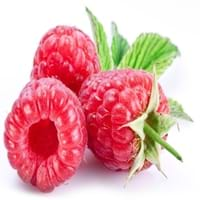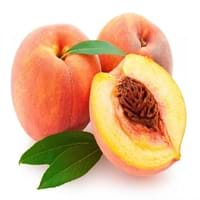Health Benefits
Cancer prevention, Heart care, Prevents macular degeneration, Reduces blood circulation problems
Cancer prevention, Heart care, Improves eye vision, Reduces stress, Regulation of heart rate
General Benefits
Anti-inflammatory properties, Controls blood sugar levels, Digestive aid, Eye care, Helps in weight loss
Anti oxidant properties, Eye care
Skin Benefits
Anti-aging benefits, Brightens and lightens complexion
Heals sunburn, Reduces wrinkles, Treatment of skin diseases
Hair Benefits
Acts as moisturizer, Regulates hair growth, Shiny hair
Prevents hair loss
Allergy Symptoms
Breathing difficulty, Eczema, Hives, Itching, Nasal congestion, Runny nose, Sneezing, Watery eyes, Wheezing
Abdominal pains, Anaphylaxis, Breathing difficulty, Diarrhea, Dizziness, Hives, Itching, Lightheadedness, Nasal congestion, Nausea, Swelling of mouth, tongue or lips, Tingling sensation in mouth, Vomiting, Wheezing
Side Effects
Allergic reaction
Allergic reaction
Best Time to Eat
Best if taken as a breakfast (or empty stomach), As a snack in the late afternoon, Don't eat after meal, Morning time (before lunch)
As a snack in the late afternoon, Eat the fresh ones, avoid mixing with any other foods, don't eat after meal., Morning time (before lunch)
Vitamin B5 (Pantothenic Acid)
Vitamin C (Ascorbic Acid)
Vitamin K (Phyllochinone)
Phytosterol
Not Available
Calories in Fresh Fruit with Peel
Calories in Fresh Fruit without Peel
Not Available
Not Available
Season
Summer
Autumn, Summer
Varieties
Amity, August Red, Boyne, Canby, Caroline, Comet, Dinkum, Dorman Red, Latham, Meeker, Black Hawk, Hayda, Lauren, Meeker and Latham
Reliance, Sweet Scarlet, Spring Snow, Sugar May, Santa Rosa, Red Beauty, Glowhaven, Cresthaven and Redhaven Peaches
Color
Black, Purple, Red, Yellow
Pink, Red, White, Yellow, Yellowish-orange
Origin
Europe, North Asia
China
Soil Type
Sandy loam
Sandy loam, Well-drained
Climatic Conditions
Cold
Cold, Warm
Facts about
- There are more than 200 varieties of raspberries.
- In USA, 90% of the raspberries are grown in Washington, California and Oregon.
- They do not ripe after they are picked.
- A raspberry contain 100 to 120 seeds.
- In china, peaches are considered as a symbol of good luck.
- From 1982, august is National peach month in USA.
- In roman times, Peaches were also called as Persian apples, as people assumed that they originated from Persia.
Top Producer
Russia
China
Other Countries
Azerbaijan, Canada, Mexico, Poland, Serbia, Spain, Ukraine, United Kingdom, United States of America
Greece, Italy, Spain, United States of America
Top Importer
United States of America
Germany
Top Exporter
Poland
Spain
Botanical Name
Rubus Idaeus
Prunus persica
Synonym
Not Available
Not Available
Subkingdom
Tracheobionta
Tracheobionta
Division
Magnoliophyta
Magnoliophyta
Class
Magnoliopsida
Magnoliopsida
Species
R. idaeus
P. persica
Difference Between Raspberry and Peach
We might think that Raspberry and Peach are similar with respect to nutritional value and health benefits. But the nutrient content of both fruits is different. Raspberry and Peach Facts such as their taste, shape, color, and size are also distinct. The difference between Raspberry and Peach is explained here.
The amount of calories in 100 gm of fresh Raspberry and Peach with peel is 53.00 kcal and 39.00 kcal and the amount of calories without peel is Not Available and Not Available respectively. Thus, Raspberry and Peach belong to Low Calorie Fruits and Low Calorie Fruits category.These fruits might or might not differ with respect to their scientific classification. The order of Raspberry and Peach is Rosales and Rosales respectively. Raspberry belongs to Rosaceae family and Peach belongs to Rosaceae family. Raspberry belongs to Rubus genus of R. idaeus species and Peach belongs to Prunus genus of P. persica species. Beings plants, both fruits belong to Plantae Kingdom.









